In 2018, global consumer spend in both Apple‘s App Store and Google Play was more than $100B, and it’s going to surpass $120B in 2019. It’s actually growing 5x faster than the overall global economy. What’s more, in-app purchases and subscription-based apps are becoming standard amongst the mainstream population. Almost 50% of US millennials made at least 5 in-app purchases last year, and when it comes to the most grossing apps, the TOP-5 of them are monetized through a subscription-based model, where users continuously shell out money. [1][2]
It’s safe to say that people are willing to spend their money on (and in) mobile apps of all kinds, and app makers are doing their best to show-off features and optimize conversion funnels. And as it turns out, the subscription model is one of the safest ways how to survive as a software company. In this article, I will share with you a few techniques that helped companies I worked with to increase their subscription-based revenue.
Worldwide App Store Consumer Spend in USD (Billions) [1]
There are 2 ways to increase the revenue of your subscription-based app:
1. Growing the number of Subscribers
The most important metrics for your sales funnel and growing your subscribers are the sales page conversion, install to trial conversion, the average time from install to trial, and trial to paid conversion. Also, pay attention to your other product metrics — e.g. aggressive in-app communications might have a negative effect on your user retention, even though it slightly increases the conversion to trial.
When you’re making any type of change in your conversion funnel, always measure the impact and evaluate exactly how each adjustment influenced your metrics. For sales funnel experiments, I’d recommend using A/B tests because they help to ensure that there is a level playing field for every variant. This will help to minimize any external influences that could skew your results. In addition, always test just one change at a time to help pinpoint the specific changes that had an effect.
In-App Sales Page
For app monetization, the in-app sales page is a centrepiece and it’s certainly the most important part of your in-app purchase funnel because it leaves the biggest impact on your sales numbers. That’s why I start here, and you should too.
The key to selling your product is to first understand your customer needs and second, explain how your product can solve them. The most effective way for learning your customer's needs is to use the Kano Model. When you know it, clearly state it in 3–4 points. Avoid providing too much information; people are sick of long reads. Tell your users why they should purchase your subscription and give them information on how it will improve their experience instead of just providing the list of features that they’re buying. Focus on the positives — users pay for better service, not the removal of annoying features.
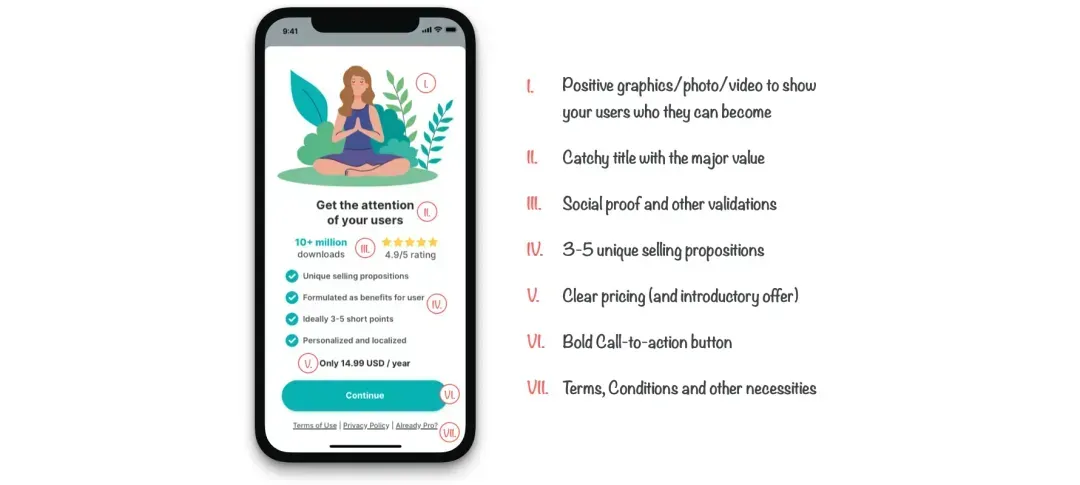
For Spendee, which is one of the apps we build at Cleevio, just a clear explanation of USP and explicit trial statements helped them improve the sign up to start trial conversion for 20%.
In the event that your app offers more than one subscription-based plan, make sure that you’ve clearly explained the differences between each and told your users all about the individual benefits and limitations (if any) of each model. As William Hick famously found, the more choices you present your users with, the longer it takes them to reach a decision on which one to interact with. If your app contains more than 2–3 different subscription plans, think about simplification. Here is a case study on how Groove increased its trial signups by 358% by simplifying its pricing.
While an annual plan might be great for your cash flow and revenue predictability, such a long commitment might seem scary to your customers who still don’t know your app very well just yet. At first, it might be beneficial to provide them with additional billing options (monthly or quarterly) and highlight how much they can save on the yearly option. Another way to reduce the initial friction is through introductory offers.

Introductory Offers
The purchase decision-making process is difficult, and it‘s often guided by irrational thinking and emotions. Introductory offers are a great way to mitigate insecurity and give your users an extra logical argument for trying your product. With both Apple‘s App Store and Google Play, you have basically 2 options: Free Trial and Introductory Pricing.
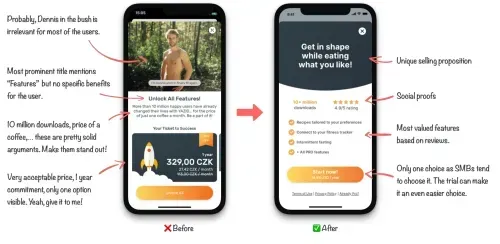
With Free Trial, you offer your customers a short period of time (typically 3, 7, or 14 days) when they can test all the subscription features for free. A premium first-time experience helps to engage people and hook them.
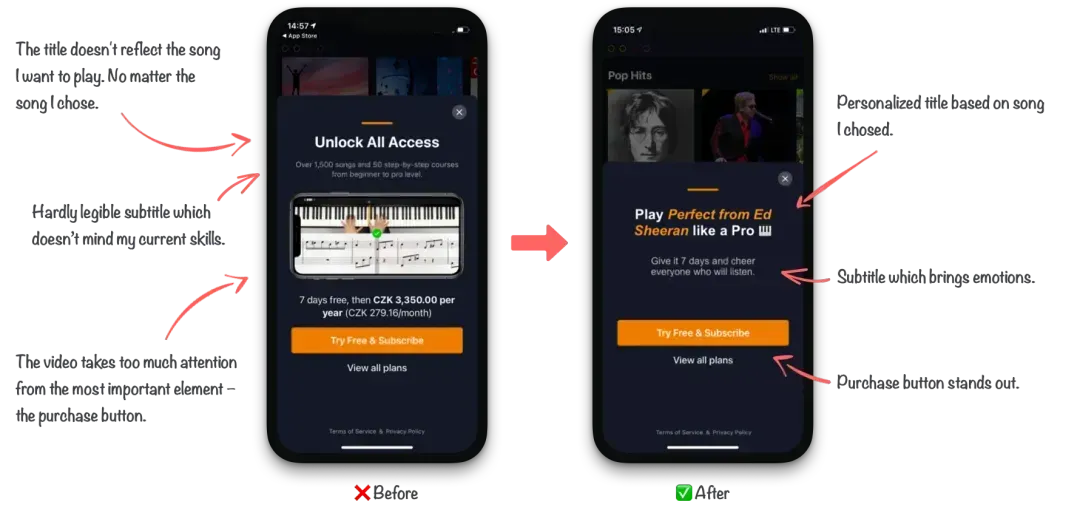
Introductory Pricing allows you to present a special pricing offer at the beginning of the subscription-based cycle (e.g. first 3 months for $0.99, then $2.99/month). This offer might be especially useful if your customers need more time to understand the value of the paid plan that you’re looking for them to purchase. In addition, it might also attract early price-sensitive customers, who will be enticed to purchase your app through an introductory price first. The goal is to entice them to purchase the subscription after using and enjoying the features of your app.
Great introductory offer examples from Sleepzy, 30 Day Fitness, and Runtastic.

Territorial Pricing
The Law of demand states that when a product decreases in price, it leads to an increase in demand. Elasticity describes just how big this increase in demand is. The important learning lesson to take away here is that if the demand is like a piece of elastic, a relatively small drop in price can multiply the demand, and result in bigger revenue. [4]
Elasticity depends on many variables. One of them is purchasing power parity in a particular country. If you provide the same price for your subscription-based app all around the world, you might compete with a cup of coffee in one country, while in other countries, people survive a few days for that amount of money.
Try several price experiments in different countries and figure out what your price elasticity looks like in each of them. In some countries like the US, Australia, or some north European countries, the price for your subscription-based service might be 2–3x higher without any significant drop in units sold. On the other hand, countries like India, Thailand, or eastern European countries might generate much higher total revenue if the price of your app shrinks by about half.
Average purchasing power parity by country (GDP per capita, Int.$) [9].
Make The Process Effortless
Don’t expect your users to search for the in-app purchases. It’s always best to present them with your subscription-based plan as soon as possible and ask them to subscribe. Some good options would be to present them with a subscription introduction after they start using the app, place a persistent “subscribe” button that remains visible on the home screen, or design a subscription section in an account or app settings menu. In my experience, the offers that appear in the moment when a user shows interest in a premium feature often generate great conversion rates.
Reduce the friction and all unnecessary steps needed to subscribe. The subscription flow should be as straightforward as possible. All additional user information (demographic info, reasons for use, etc.) might be obtained later. Based on Apple’s research, subscription-based flow with 3 clicks has around a 61% success ratio. On the other hand, a 4-click flow already drops to 48%, and long flows with more than 8 clicks are actually completed only by around 7% of all users.
2. Retain Subscribers
Acquiring a new subscriber is just one part of the journey when it comes to subscription-based optimization. The other equally important part is retaining subscribers. With a high churn rate, it’s extremely difficult to establish a sufficient Monthly Recurring Revenue. It’s 5x more expensive to acquire a new customer, as to retain an existing one. At the same time, increasing paying customer retention rates by 5% increases profits by 25–95%. [5]
“It’s 5x more expensive to acquire a new customer, as to retain an existing one.”
The important metrics for your retention strategy are your day-1 retention rates, as well as the retention rates of paying users between months 1–3 after launch, the average revenue per user / per paying user, and user lifetime value. It’s also important to care about your other product metrics, like how users interact with paid features, how much time they spend in your app, how strong your competitive advantage is, and your overall product experience. Also pay attention to your customers‘ satisfaction rate and app reviews.
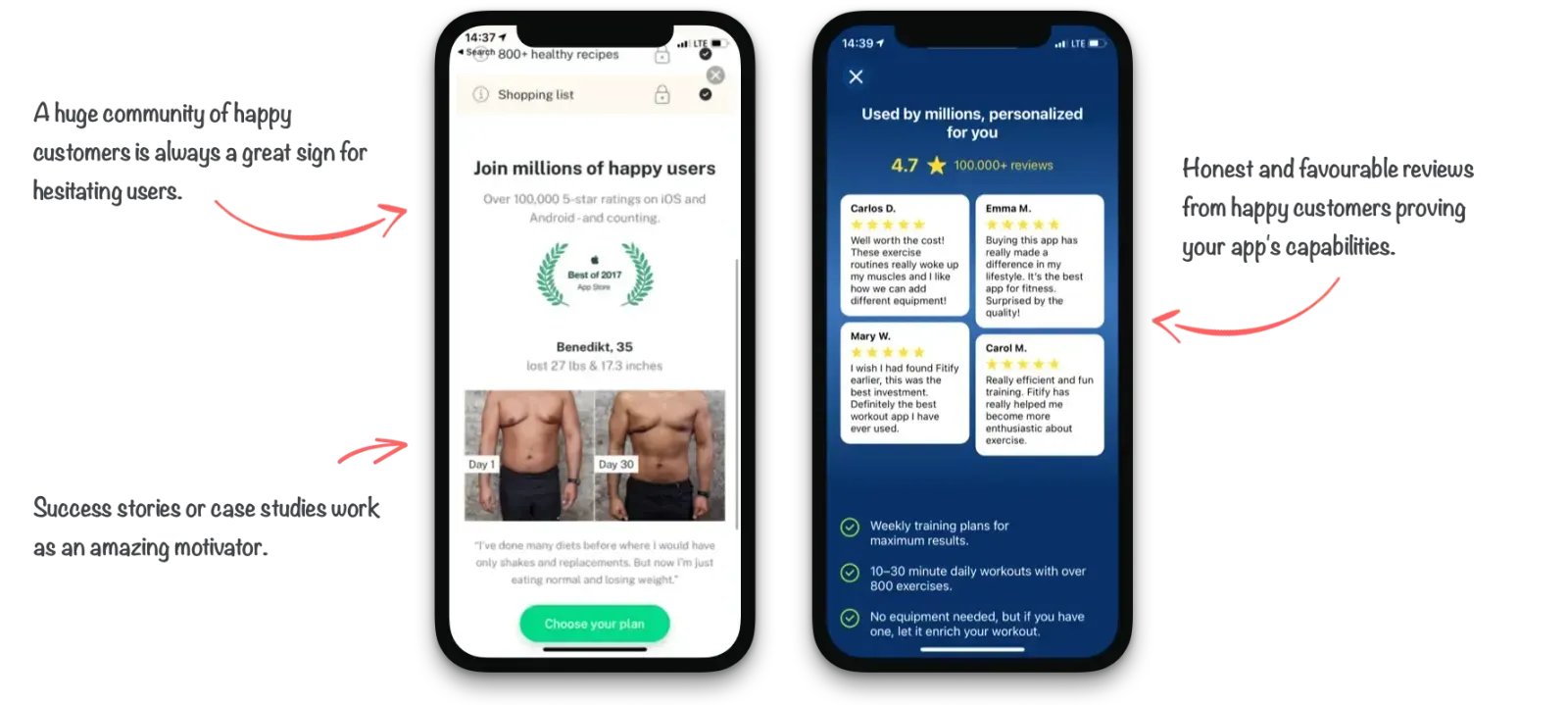
While the product itself has the biggest impact on retention and it’s certainly a real challenge to create a truly engaging product, there are certain ways to reduce the churn rate of your paying customers. There are 2 kinds of churn: voluntary (when your customer consciously cancels the subscription) and involuntary (when the subscription is interrupted due to other circumstances).
Involuntary Churned Subscribers
When a new subscription-based period occurs for your customers, there is a slight chance for the payment to be declined. It’s mainly caused by outdated payment information, or simply because the bank declined the transaction. In my experience, around 20% of transactions in the EMEIA region and around 10% worldwide are declined each month for that reason.
To prevent involuntary churn caused by payment processing issues, both Apple‘s App Store and Google Play allow developers to set up a grace period. It simply gives your subscribers some extra time (typically 3–7 days) to update their billing information and/or the bank to process the transaction. During the grace period, your customer can still use all the subscription-based features and their experience is not compromised. Google claims that developers who use a grace period see a 57% higher recovery rate from renewal declines.
Number of days in grace period after which the subscription was recovered
Take action and help your customers resolve the issue. With realtime server notifications, you can immediately gain access to the information that someone gets during their grace period and begin a helpful dialog using in-app messaging or notifications. Explain the situation and offer the deep-link to account settings where that particular user can update their billing information.
Voluntary Churned Subscribers
The best way to get back voluntary churned subscribers is to discover the reason for cancelation and then fix it. It might be anything from technical issues, price level, or bad customer support, to features fits and bad overall app experience. Without fixing the major issues, you’ll probably never be able to retain a significant part of your new subscribers.
Find out the major issues of your app by sending out a cancelation questionnaire to users who churned. The insights from this survey will help you create a strategy to retain your current customers. For your Play Store customers, you get a basic survey for free and you’ll find results in your Play Console. In the case of App Store customers, you’ll have to manage it by yourself. Here are some tips on how to get the most out of exit surveys.
For those subscribers who are leaving because of the subscription cost, if they found an alternative, or if they simply don’t use the app enough, a win-back strategy might be worth it to try. Both Apple’s App Store and Google’s Play Store have tools that allow you to create a special price offer for those users who churned recently. Your goal shouldn’t be to win-back all churned customers; in fact, it should only be to win back all profitable customers. Find out who they are and personalize the communication based on the features they use and might miss.
A great example of Win-back Offers from Noted, and HoppyGo which is an app build at Cleevio.
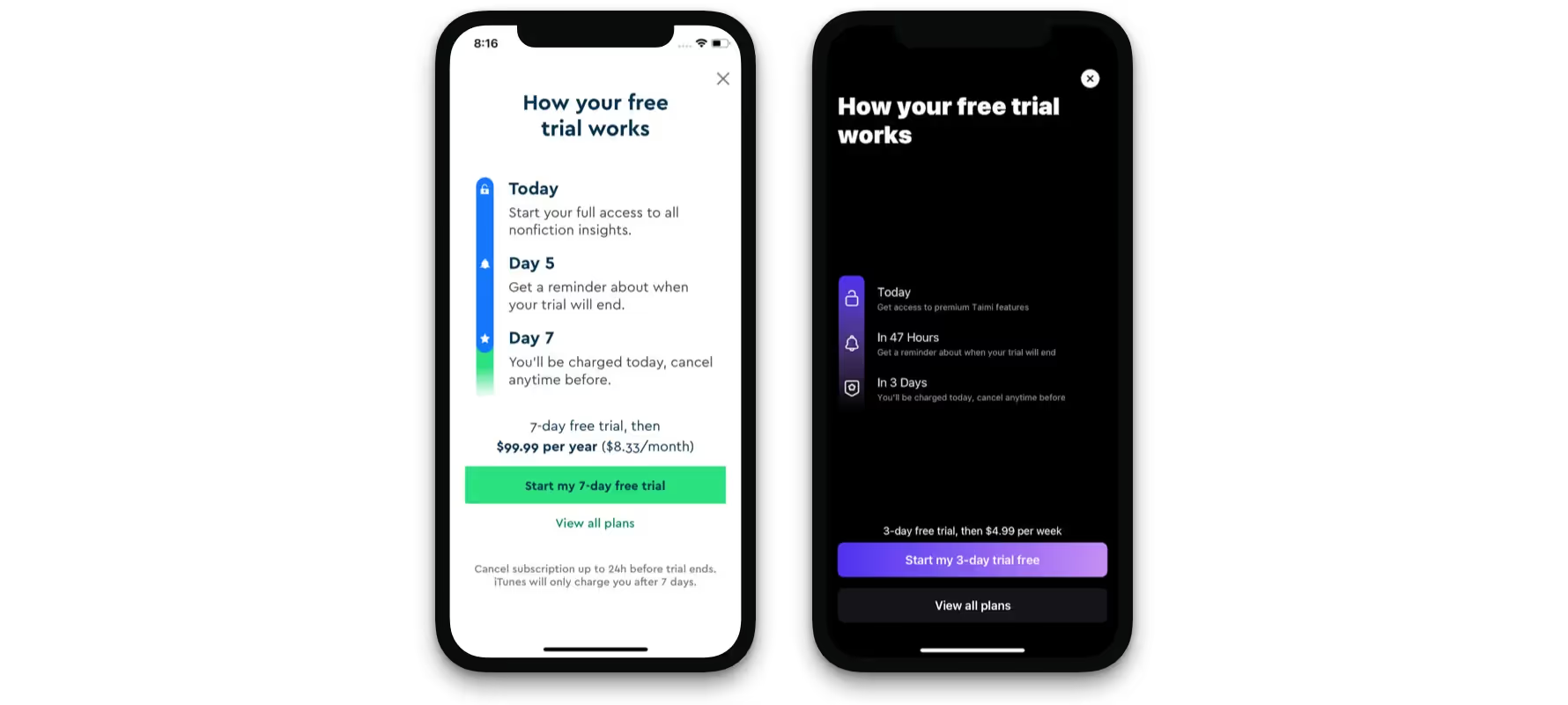
Conclusion
With the enormous growth rate of mobile app industry revenue in past years, subscriptions-based apps are a great opportunity to grow your app’s business. Both the App Store and Play Store offer features that can help you to optimize your retention funnel and acquisition strategy.
However, the decision is up to you. Start with your product’s retention — it’s much cheaper to retain a customer than acquire a new one. Then continue with the low hanging fruit — small adjustments with the biggest potential to impact your revenue. Don’t forget to document each attempt and evaluate your results. And most importantly, don’t give up. Sometimes it needs dozens of experiments before you find the gold vein.



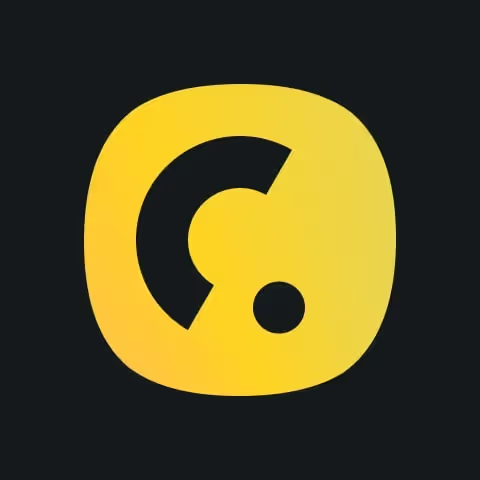




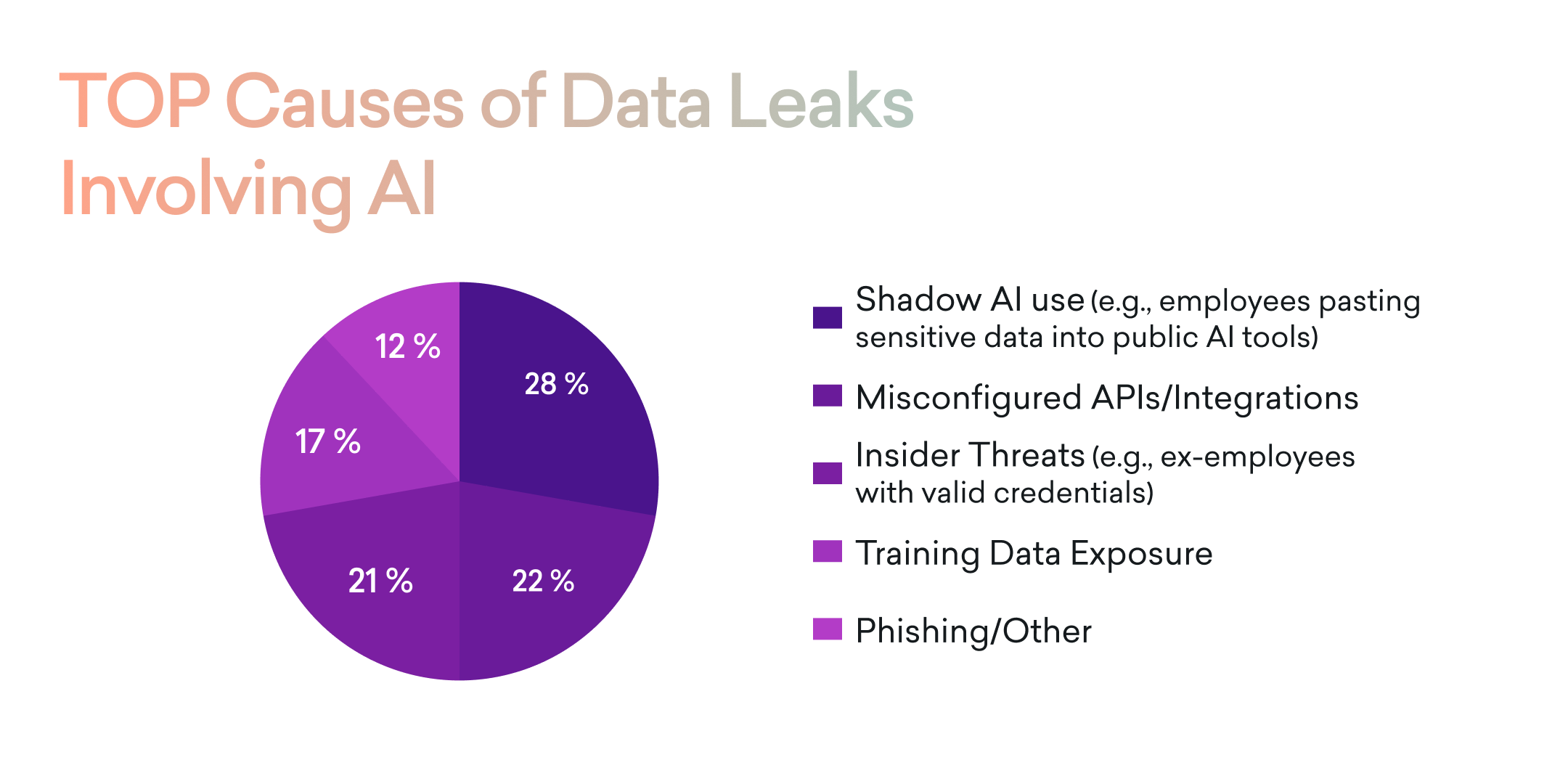
.png)


.avif)